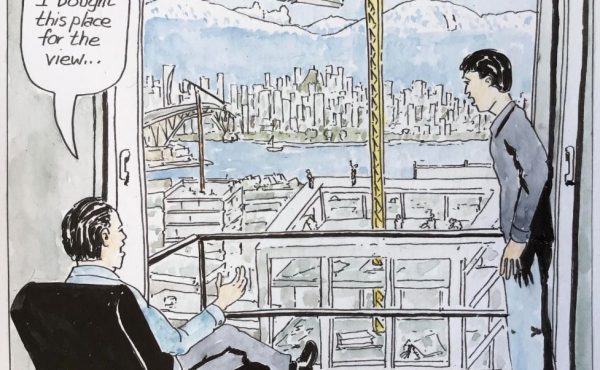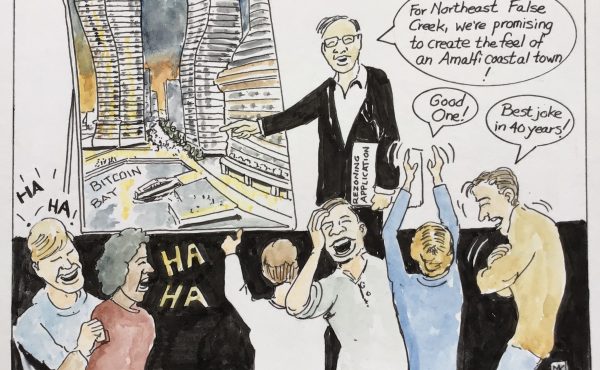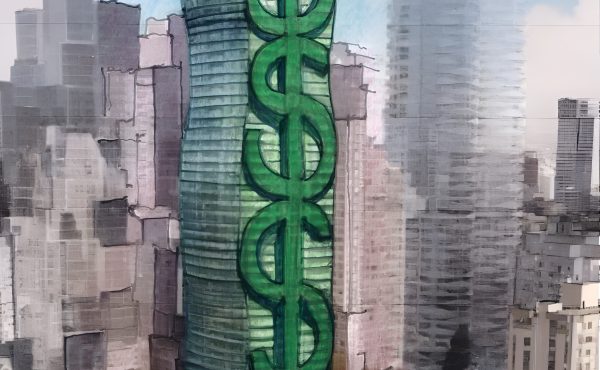
“Despite the trauma of September 11, 2011, the skyscraper still retains much of its appeal in the twenty-first century – both for the representational needs of powerful corporations and for the collective imagination alike. Evidence of this can be seen not only in the incessant competition among companies, cities, and nations for the tallest building, but also in the contemporary photographer’s infatuation with this type of architecture. If artists can be considered sensitive seismographers of social and cultural developments, then perhaps the skyscraper embodies the zeitgeist of our age more than ever before.”
– Martino Stierli, from ‘The High-rise, Photographically Considered’
Edited by Andres Janser and the Zurich Museum for Design – Hatje Cantz Publishers (2011)
There is a book that comes along every once in a while that reminds us that not too long ago – before the internet and e-publishing – books and newspapers were our only means of printed communication, where the visceral pleasure of turning a page was to embark into an undiscovered country and partake in the pleasure of print, as opposed to the RGB pixels of colour on an LCD screen. The invention of the printing press remains a pivotal moment in history, just as for thousands of years prior, architecture had been the great book of human civilization written in the ink of the cultural forces of the day.
The singular phenomenon of the high-rise building typology in history is likewise a great cultural leap forward in city building, and as presented here, Highrise: Idea and Reality (Hatje Cantz Verlag – 2011) is an exploration of the building-type’s most recent iterations as seen through the eyes of both the artist and architectural voyeur. Some of the images are gritty and surreal, while others are sublime — such as Hans-Georg Esch’s breathtaking Shanghai 17, and a SCI-ARC produced comic-strip depicting the street life in Foster’s new Masdar City, including McDonalds’ signs in Arabic.
The authors also somberly report that America, where the high-rise was born, is sadly no longer a place capable of experimentation with this building type, pointing at the failure to truly innovate anything beyond the mundane at Ground Zero. Instead, one must look East to where the high-rise is defining itself in newer and bolder forms.
With a list of high-rises built the world over, the book includes many stunning examples — such as Steven Holl’s spectacular Linked Hybrid in Beijing — skillfully balancing the architectural content of the book with art (i.e. photography focused on the city and its many varied juxtapositions of this building typology).
Presented in a large 8 ½” x 12” full-colour format, the two sections that treat the high-rise as source material for the many photographers are featured at the beginning and end of the book, providing a clever counterpoint to the essays of many recently completed towers making up the centre of the book. This includes a section solely on new towers in New York City and Shanghai written by MoMA architecture curator Andres Lepik and Architecture Record contributor Clifford A. Pearson, respectively. Another section is written on London by former Architect Journal editor Kieran Long, looking at how Renzo Piano’s new 70-storey Shard is about to dramatically transform that city’s skyline.
The chapter on the rapidly growing Central Business District (CBD) in Shanghai points out that this city is now home to some of the tallest towers in the world, and that where in the 1980’s it had only 120 tall buildings, it now has over 725 buildings over 30 storeys, and 12,000 over ten! Furthermore, as the authors point out in the introduction, half of all the high-rises now on the planet have been built just in the last ten years. This is a testament to the rapid industrialization of countries like the UAE and China, the latter which will have built over a hundred new cities within the next decade.
The book begins with the strongest of its photographic work, including two similar compositions in which photographs of residential building complexes are juxtaposed with individual thumbnail shots of each building’s living units on the following pages, laid out in cells approximating their physical location in the actual building.
The first of these photo compositions, set in Johannesburg, shows a Jeff Wall-like image of three priests praying in the foreground and a background of the city’s quickly growing skyline, dominated by the photograph’s central subject – a tall reinforced concrete residential tower. Turning the page, the perspective is reversed, as both pages are filled with a hundred thumbnail views depicting the view through each window, looking down at the priests from the tower. A powerful statement.
The second composition, a photo essay on the Kowloon, includes the history of some of its denizens who agreed to be interviewed for the piece. This also includes an axonometric 3-dimensional cross-section drawing of some of the units. The Kowloon is much like a car wreck, where taking a photograph is akin to being at the scene of a crime – as such the authors have cleverly juxtaposed these more introspective pieces in the first part of the book with the photography of Frank van der Salm and Stephane Couturier, whose work is astounding when you realize that their depictions of endless building facades are actual places in China and Korea — not just clever Photoshop collages.
The next chapter– ‘Realities of the High-rise’ – proves to be the theoretical meat of the book, itself divided into six sections: Urbanization of the World, Supertall, Living, Hybrid, Film, and Arts. In Urbanization the authors point out the obvious, that the world’s cities are filling up at a pace never seen before in history, with the tall building being used in many places where it has never been before.
The second section – Supertall – is an obvious and necessary component of the book, opening with an aerial shot of Dubai dominated by the 828 m tall Burj Khalifa. Featuring a graphic depicting a list of the tallest buildings built between 1885 and 2010, provided by the Council of Tall Buildings and Urban Habitat (CTBUH), this section also includes the tallest twenty towers completed in just 2010. Not suprisingly, six of these were realized in Dubai alone.
The next section – Living – looks at how people inhabit these tall towers differently in different parts of the world, featuring case studies of towers in Bangkok and Singapore. This is followed by Hybrid, a section that focuses on the Linked Hybrid building – more specifically, how Beijing developer Modern Green and Steven Holl were able to realize this combination of tall towers, amenity, circulation, and sustainability all in one project.
The remainder of this theoretical section looks at how different types of art have idealized the high-rise form over time. With a section on just film alone, the authors discuss the deification of the high-rise in Sofia Coppola’s Tokyo-set Lost in Translation, and how it was as well caricatured in classics like The Towering Inferno and An Affair to Remember. The final section – Art – speaks to how modern sculpture and even comic book art has been influenced by the proliferation of the high-rise building type. As the book’s central treatise then, the remainder of the book then provides five case studies, i.e. cities where tall towers have (or have not) been built: New York, London, Zurich, Hong Kong, and Shanghai.
The final essay in the book — written by ETH chair of art and architecture Martino Stierli — provides an illuminating and lively conclusion, as well as the rationale for the photography chosen for the publication. In particular, he describes the technique of photographer Olivo Barbieri, who takes his pictures from a helicopter, leaving only the centre of the image in focus. The final product is a surreal miniaturization-effect, making the city look much like an architectural model, and as such it is one of his images that provides the book’s cover. As if to justify the many techinques used to produce the photographs throughout the book, Stierli points out: “The inhospitality of the contemporary megalopolis occasionally offers photographers the chance to create mise-en-scenes out of their bizarre, well-nigh unreal beauty.”
The product of the Zurich Museum of Design and the consistently intelligent Hatje Cantz Publishers, High-rise: Idea and Reality is a sublime visual journey, combing fresh photographic material with critical essays on the subject to provide an up-to-date and entertaining chronicle of the high-rise typology. The featured cities in the book provide a current monograph of new towers in New York, London, and Shanghai, while the shots of Hong Kong, Dubai, and Johannesburg are eerie reminders of the typology’s sometimes surreal manifestations.
Zurich, the home city of ETH and many of the book’s authors, is included as the counterpoint to many of these hyper-tall cities. It serves as a reminder that a lot of the big cities in Europe have managed to form their CBD’s very well without having to resort to this phallic building type (with notable exceptions like Nouvel’s Torre Agbar in Barcelona). Regardless, it is clear that it has become commonplace around the globe to use the high-rise for solving problems of residential sprawl and concentrating populations in order to reduce dependence on the automobile.
With a recent retrospective on Pruitt-Igoe illuminating America’s failure in the 1960’s to use tall slab towers to house the country’s poor, many of the images depicted at the end of this book — showing poorly maintained and more dilapidated specimens in Hong Kong and Seoul — are juxtaposed with images of the rapid-paced construction in Dubai, making one ponder how other cities in developing countries are coping with the demands for this new building typology. Allowed to proceed relatively unchecked in some nations, the results have been disastrous and at times grotesque, the obvious example of the Kowloon being used within the book.
Alongside the shiny new towers in Dubai, Shanghai and New York, it is a contrast that has not escaped the critical eye of the book’s authors, who postulate that the future belongs to this century old building type. As it simultaneously fills our skylines and dominates our imaginations, like some new Jungian archetype for our collective psyches, it will continue to facilitate our current paradigm shift towards the new age of the city.
***
For more information on Hatje Cantz Verlag, go to www.hatjecantz.de
**
Sean Ruthen is a Vancouver-based architect and writer.




